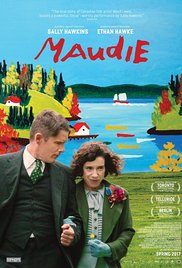 My wife is an artist. She has perfected a technique called fabric fusion. She starts off with a gray scale photograph and then overlays it with acrylic paints and hand-dyed silks. She has had exhibits of her work at the Tel Aviv Opera House and at the Jerusalem Theatre, both prestigious locations to show art. She sells her work, but she primarily paints because it satisfies her creative urge.
My wife is an artist. She has perfected a technique called fabric fusion. She starts off with a gray scale photograph and then overlays it with acrylic paints and hand-dyed silks. She has had exhibits of her work at the Tel Aviv Opera House and at the Jerusalem Theatre, both prestigious locations to show art. She sells her work, but she primarily paints because it satisfies her creative urge.
What is important is not the money she earns through her art, but the creative experience of producing art that people can enjoy. She regards her artistic work as part of her divine mission.
Occasionally, she asks me to critique a painting, but I feel inadequate to the task. I very much feel that art is in the eye of the beholder. I cannot predict what someone will like.
In the final analysis, enduring art can spring from anywhere, even from a remote country village in Nova Scotia. This is what happens in Maudie, the true story of Maudie Dowley, a woman with severe arthritis who develops an iconic ability to paint flowers and birds that appeal to a broad cross-section of people that appreciate her simple but powerful expressions of nature’s beauty.
Rather than live with her highly judgmental Aunt Ida, Maudie decides to strike out on her own and find a job that will enable her to support herself and live independently. Serendipitously, she meets Everett Lewis, a coarse and laconic fish peddler who is seeking a cleaning lady for his home in return for providing room and board and a meager salary. Maudie applies for the job and Everett agrees to try her out.
While employed at his home, Maudie begins to paint parts of the house including shelves, walls, and windows with decorations of flowers and birds. One of Everett’s customers, Sandra, who lives in New York City, is fascinated by Maudie’s art and offers to pay her money for her cards and paintings. Her patronage of Maudie’s art leads to more and more commissions, eventually reaching the eyes of Richard Nixon, who purchases one of her works.
Eventually, Everett and Maudie marry and learn to love one another even though they have totally different temperaments and worldviews. Their marriage is stormy, but in the end it is satisfying to both. Maudie’s ability to see beauty in the ordinary cycle of nature sustains her as she manages her tumultuous relationship with Everett.
In the daily Jewish liturgy, God is described as renewing the creation every day. The message of the prayer is to understand that the beauty of nature manifests itself in ordinary days. It is not a special event. Each day is an opportunity to proclaim the significance of daily miracles, which inform our lives all day long. The challenge is to view nature with fresh eyes. Maudie is able to do this especially when she sees nature through a window. She reflects: “How I love a window. It’s always different. The whole of life. The whole of life already framed. Right there.”
The great medieval sage Maimonides viewed the natural world as a testament to God’s grandeur. In discussing the foundational principles of the Jewish faith, he writes that we can get close to God not only by studying holy words, but also by observing holy works, the everyday miracles that present themselves through natural phenomena. A mountain, a flower, a river, a tree can remind us of the inherent beauty in the world and bring us close to God.
Maudie, a simple soul, is able to transcend her physical limitations when she sees nature in a multi-faceted way. Nature for her is never random or chaotic. Rather it reflects a divine beauty hidden in the flora around us.